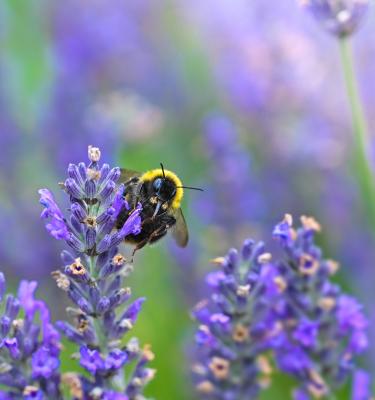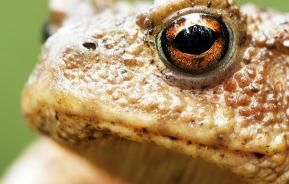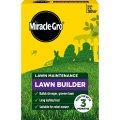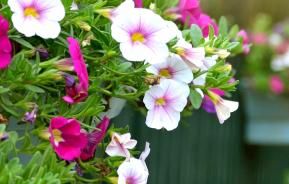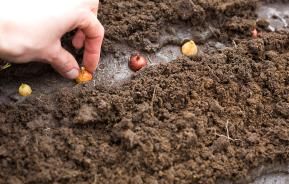One of the best ways that we can care for bees and butterflies is to have a diverse selection of plants that flower at different times of the year. This not only makes your garden look great but increases the length of time that pollinators have access to nectar.
Purple reign
Bees can see the colour purple more clearly than any other shade. Some of the most popular flowers for bees include lavender, catmint, buddleia, and alliums – all of which have purple flowers. However, there are a huge number of plants that are different colours that bees will still appreciate, so don’t think that you need to pull up your plants to create a purple themed garden.
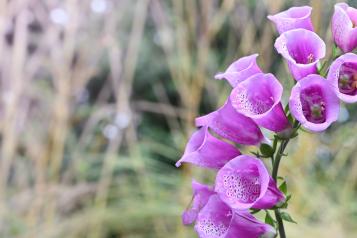
Butterflies need a high body temperature to fly, so they can be found basking in the sun until they’re able to continue moving. Therefore, they prefer to visit plants that are in a sunny or mostly sunny spot. One of their favourites is Verbena bonariensis that has tall wiry stems topped with clusters of tiny purple flowers in summer and autumn, perfect for bringing height to a border where they grow to 1.5m tall.
For colour and interest for butterflies into autumn, Hylotelphium spectabile (sedum) is a great source of nectar for late-flying bees and butterflies. Plant in a well-drained soil in full sun, and you’ll have plenty of visitors to the masses of flat flowerheads.
Ease of access
Growing a diverse mix of plants is a great way of ensuring there is plenty of nectar and pollen on offer for pollinators. Single, open flowers are best for bees and butterflies– these are ones where the centre of the flower can be seen because they are easy to access. On the other hand, double flowers consist of too many petals making it difficult for pollinators to find the centre.
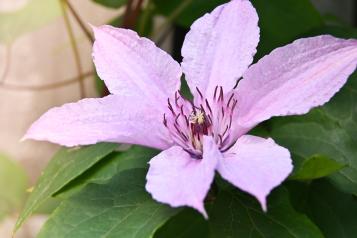
Tubular shaped flowers like foxgloves, penstemons, and lupins are a great source of food for bees with long tongues such as Bombus hortorum (garden bumblebee) which can be identified by its large and scruffy looking yellow-black thorax and white tail. For these long-tongued bees, plant foxgloves in a moist but well-drained soil in a spot with plenty of sun or partial shade.
They will grow up to 2.5m tall and flower in summer when you can enjoy hearing bees visiting through the sunny season. For bigger and better flowers feed using Miracle-Gro Performance Organics All Purpose Concentrated Liquid Plant Food, which is 100% organic and vegan so is great for plants whilst being kind to nature and bee friendly.
Bee kind
As well as planting a variety of flowers for pollinators, there are other things to be mindful of in the garden too. Being kind to bees means using natural and organic products in you garden, including your beds and borders, vegetable patch and the lawn. Using natural products like Performance Organics means you can grow with the knowledge that you are being kind and gentle to nature without compromising on quality.
Miracle-Gro Performance Organics Fruit & Veg Granular Plant Food is formulated to provide tastier and higher yields of crops. The plant-based fertiliser provides essential nutrients to feed plants for 3 months by slowly releasing them. It’s important that veg gardens are bee-friendly as we rely on them for some of our crops to be pollinated, for tasty harvests.
Food for thought
There’s nothing like hearing and watching bees and butterflies flock around your plants. As well as plants, there are other ways to provide butterflies with nourishment they need for a little pit-stop in your garden.
Create a butterfly feeder by mixing four parts water with one part sugar in a pan until the sugar has dissolved. When the mixture is cool, pour it into a shallow container that’s lined with paper towels. Brightly coloured scouring pads can be added to the container as an attractive and dry place for the pollinators to perch. Place the feeder on a post or hang using garden twine near your flowers that are perfect for pollinators.
There is so much joy in encouraging bees and butterflies to the garden. Not only is it fascinating to hear and watch them visit beautiful blooms in the garden, but it’s great to know that you’re lending a helping hand to our important pollinators.
